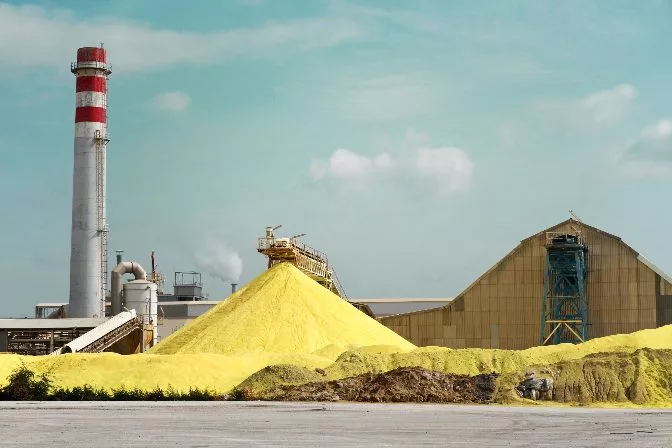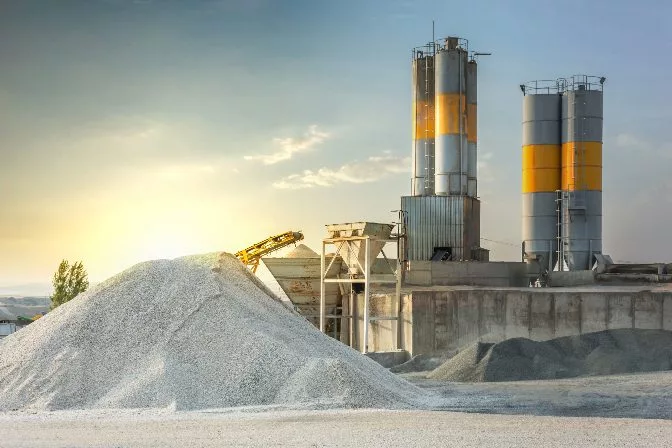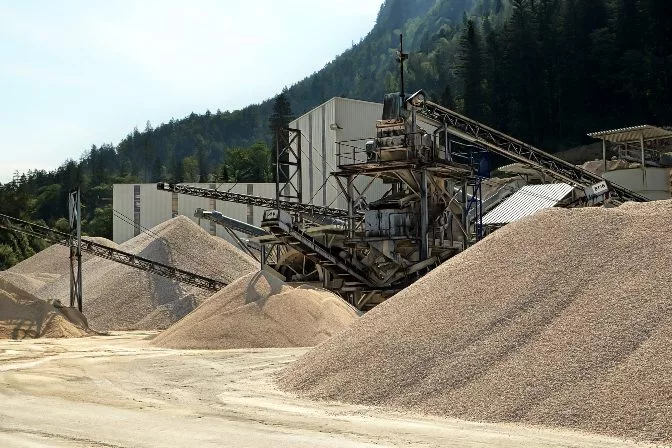Stockpile measurement is a process used to determine the size, volume, or weight of materials stored in large quantities. This technique is essential for businesses that deal with bulk commodities, as it helps them manage inventory efficiently and make informed decisions. Many industries store raw materials in large piles at dedicated facilities. These stockpiles are created by trucks, bulldozers, and workers, but without accurate measurements, it's difficult to know exactly what's available. In the past, manual methods and GPS were used, but they often lacked precision and reliability. Thanks to recent technological advancements, companies can now use highly accurate tools to measure stockpiles, leading to better productivity, cost savings, and improved decision-making. Whether you're working with coal, ores, fertilizers, or dust, precise stockpile measurements are crucial for success. Accurate stockpile measurement is vital across many industries. It helps reduce waste, improve efficiency, and support better financial planning. Let’s explore why this process is so valuable. When stockpiles are measured manually, there’s a high chance of overestimating or underestimating the amount of material present. This can lead to wasted resources, unnecessary costs, and missed opportunities. With modern measurement techniques, businesses can track inventory more precisely, reducing excess stock and optimizing resource use. Accurate data also helps in planning production schedules, managing inventory, and coordinating workforce activities. This leads to fewer delays, lower maintenance costs, and higher overall profitability. Modern stockpile measurement tools generate reliable data that can be used for financial reporting, tax calculations, and securing loans. The more accurate the data, the easier it is for businesses to demonstrate their inventory status to stakeholders, auditors, or financial institutions. This transparency not only builds trust but also helps in making strategic business decisions. For example, companies can use stockpile data to forecast demand, manage supply chains, and comply with regulatory requirements. Many industries must adhere to strict environmental and safety regulations. Stockpile measurements play a key role in compliance, especially when calculating emissions or monitoring material storage. For instance, the EU Emissions Trading System requires accurate mass balances, which can be achieved through precise stockpile management. Regulators appreciate accurate and transparent data, which reduces the risk of penalties and ensures that businesses operate within legal boundaries. Measuring large stockpiles manually can be dangerous. Workers may face risks such as falling into unstable areas or being exposed to hazardous materials. Drones and other advanced technologies have made it possible to collect data remotely, reducing the need for on-site inspections and minimizing exposure to unsafe conditions. This not only protects workers but also improves operational efficiency. By using drones, companies can gather data quickly and safely, even in challenging environments like mines or industrial sites. Stockpile measurement is widely used in several industries, including aggregates, construction, mining, recycling, and shipping. Each sector has unique challenges and benefits from accurate measurements. Aggregates like sand, gravel, and crushed stone are essential in construction. Managing these materials effectively requires precise stockpile measurements to avoid mixing different types and ensure efficient use. Stockpile aggregates Accurate measurements help prevent cross-contamination and ensure that the right mix is always available for each project. In construction, stockpile measurements help plan hauling routes and manage inventory. Accurate data allows workers to know exactly how much material is available before starting a job, improving efficiency and reducing downtime. Mining operations rely heavily on stockpile measurements to track ore and mineral reserves. Drones and LiDAR technology allow for safe and precise measurements, even in difficult-to-reach areas. Quarry mine stockpiles These tools also help in managing overburden and ensuring that operations run smoothly and safely. Recycling companies benefit from stockpile measurements to track the amount of material they have and manage their operations more effectively. This helps in forecasting processing times and complying with environmental regulations. Ports and shipping centers handle large volumes of bulk materials daily. Accurate stockpile measurements help in planning cargo loading, tracking inventory, and maintaining smooth operations along global supply chains. Stockpile measurement in shipping and ports Even small inaccuracies can have significant impacts, making precise measurements critical in this industry. There are several methods to measure stockpiles, each with its own advantages and applications. Here are some of the most common approaches: Traditional manual methods, such as using a tape measure or estimating visually, are still used in some cases. However, they are less accurate and time-consuming compared to modern techniques. Traditional stockpile measurement with a walking wheel and tape measure While these methods are low-cost, they lack precision and are not suitable for large-scale or frequent measurements. Smartphones equipped with specialized apps can be an affordable and effective solution for stockpile measurement. They capture images or videos and use software to calculate volume quickly and accurately. Stockpile Lite app These tools are ideal for businesses looking for a budget-friendly option without sacrificing too much accuracy. Photogrammetry uses multiple images to create a 3D model of a stockpile, allowing for detailed and accurate volume calculations. It is widely used in industries where precision is essential. Drone footage on left, photogrammetry 3D model on right However, it can be costly and requires trained personnel to operate effectively. LiDAR (Light Detection and Ranging) uses laser technology to create highly accurate 3D maps of stockpiles. It is particularly useful in low-light conditions and offers superior accuracy compared to photogrammetry. LiDAR systems can be mounted on drones or handheld devices, making them versatile for various environments. Drones are one of the most effective tools for collecting stockpile measurement data. They can carry cameras, LiDAR sensors, and photogrammetry equipment to capture detailed information quickly and safely. The Elios 3 entering an industrial asset for an inspection For indoor measurements, drones like the Elios 3 are ideal, as they can navigate tight spaces and dark environments. Outdoors, drones with long battery life and multiple payloads are best suited for large stockpiles. Drones have revolutionized stockpile measurement, making it faster, safer, and more accurate. Tools like the Elios 3 are transforming how industries manage inventory, enabling real-time data collection and improved decision-making. As technology continues to evolve, the use of drones in stockpile measurement is becoming a standard practice. Companies that adopt these innovations are better positioned to thrive in a competitive market while ensuring safety and efficiency. Galvanized Steel Ground Screw Pile Conventional size is 76*400*850 and the material is Q235 steel or Q355 steel.We can also customize according to the drawings you provide. galvanized steel ground screw pile,carbon steel ground pile,hot-dip galvanized ground screw,ground screw pile Shandong Great Steel Co.,Ltd , https://www.great-steel.comWhat is Stockpile Measurement?
 Sulfur stockpile
Sulfur stockpileWhy Is Stockpile Measurement Important?
It Increases Profitability and Efficiency
It Provides Usable Data
It Helps Meet Regulatory Requirements
It Enhances Workplace Safety
What Industries Use Stockpile Measurement?
Aggregates

Construction
Mining

Recycling
Shipping and Ports

Stockpile Measurement Methods
Manual Methods

Smartphones

Photogrammetry

LiDAR
Drones for Stockpile Measurement

BENEFITS OF DRONES FOR STOCKPILE MEASUREMENT
UPGRADING STOCKPILE MEASUREMENT TECHNIQUES THANKS TO DRONES